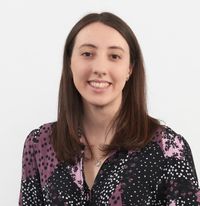King Charles banknotes enter circulation – here's how to get them
Banknotes featuring King Charles III are here. What do they look like, and what will happen to your old banknotes featuring the late Queen?


King Charles banknotes entered circulation this week, the Bank of England has announced.
The new £5, £10, £20 and £50 notes were released on 5 June 2024. It follows the launch of coins featuring the King, as well as stamps, passports and the King’s new crown design on official government websites and buildings.
In April 2024, the Bank of England governor Andrew Bailey and Sarah John (the Bank of England's chief cashier) visited Buckingham Palace to present the King with a leather-bound booklet containing the banknotes featuring his portrait. It’s tradition for the monarch to receive the first issue of new banknotes with 01 000001 serial numbers.
MoneyWeek
Subscribe to MoneyWeek today and get your first six magazine issues absolutely FREE

Sign up to Money Morning
Don't miss the latest investment and personal finances news, market analysis, plus money-saving tips with our free twice-daily newsletter
Don't miss the latest investment and personal finances news, market analysis, plus money-saving tips with our free twice-daily newsletter
Bailey told the King that it was a "big moment" as his mother, Queen Elizabeth II, had been the first British monarch to appear on Bank of England banknotes. The King praised the notes and said they were "very well designed".
We reveal what the new polymer banknotes look like, and whether you will still be able to use notes featuring Queen Elizabeth II.

King Charles III is presented with the first banknotes featuring his portrait from the Bank of England governor Andrew Bailey and Sarah John, the Bank of England's chief cashier
King Charles banknotes: what’s changing?
All four banknotes (£5, £10, £20 and £50) have been updated to include a portrait of King Charles III. Images of the new banknotes were released by the Bank of England on 20 December 2022.
In line with previous designs, the King features on the front of the note and in the see-through security window. However, other than the King’s portrait replacing the image of the late Queen, there are no changes to the existing designs.
These historical figures will continue to feature on the back of Bank of England notes:
- £5 note: Former prime minister Winston Churchill has featured on the back of the £5 note since 2016. He replaced Elizabeth Fry, a Victorian prison reformer.
- £10 note: Early nineteenth century author Jane Austen has featured on the £10 note since 2017. She replaced Charles Darwin, a key figure in developing the theory of evolutionary biology.
- £20 note: Early nineteenth century artist J. M. W. Turner has featured on the £20 note since 2020. He replaced Adam Smith, an economist and philosopher during the Scottish Enlightenment.
- £50 note: Alan Turing, the mathematician who was key to cracking the Enigma code, has featured on the £50 note since 2021. He replaced Matthew Boulton and James Watt, two key figures of the Industrial Revolution who helped to develop the steam engine.
Currently, only one woman, Jane Austen, is featured on the back of banknotes. MoneyWeek has called on the Bank of England to feature more women. Our analysis shows that since the Bank started featuring historical figures in 1970, we have only seen three women, yet 16 men have featured.
What to do with old Queen Elizabeth II banknotes
Old notes featuring Queen Elizabeth II will remain legal tender and will continue to circulate alongside the new notes featuring Charles III. The new banknotes will enter circulation gradually, being printed to replace existing notes that are worn. They will also be printed to meet any increase in demand for banknotes.
“Our approach is in line with guidance from the Royal Household, to minimise the environmental and financial impact of this change,” the Bank of England explains.
So, in other words, there’s nothing for you to do just yet. You can continue to use any existing notes as long as they’re polymer ones and not the old paper ones.
But what if you’re a currency enthusiast or someone who is keen to get your hands on one of the new notes as soon as possible? Well, for a short period from 5 June to 30 June 2024, the Bank of England will allow you to exchange some of the old notes for new ones using its postal exchange service. Find out more details and fill in the application form on the Bank of England website.
The Bank of England counter at Threadneedle Street is also issuing the new King Charles III banknotes from 5 to 11 June 2024. The counter is open to UK and non-UK residents. There is a £300 limit per customer for both the postal service and if you visit the counter in London.
Meanwhile, the Bank has confirmed that low serial numbered notes will be auctioned off for charity. These notes are particularly popular with collectors. The auctions will take place at Spink and Son over the summer.
Arnas Savickas, global coordinator of banknotes at Spink, said "the collector and enthusiast markets are anticipating that this will be one of the biggest charity auctions held for the Bank of England".
Can I still use old paper banknotes?
If you’re still hanging onto old paper banknotes, then you’ll need to take action soon if you want to spend them.
Paper £5 notes were the first to be taken out of use. They stopped being legal tender on 5 May 2017. Paper £10 notes followed shortly after on 1 March 2018, with £20 and £50 notes finally following on 30 September 2022.
Despite this, there are still lots of old notes in circulation. So if you come across one when rifling around in an old coat pocket, don’t worry. You will be able to exchange it for a new one. Depending on the age of the note, you may be able to exchange it at the Post Office or at your high-street bank – although not all of them offer this service. Otherwise, the Bank of England will exchange them for you. There is currently no cut-off date for this service.
See our article on how to exchange your old notes.
Get the latest financial news, insights and expert analysis from our award-winning MoneyWeek team, to help you understand what really matters when it comes to your finances.
Katie has a background in investment writing and is interested in everything to do with personal finance, politics, and investing. She previously worked at MoneyWeek and Invesco.
-
 The shape of yields to come
The shape of yields to comeCentral banks are likely to buy up short-term bonds to keep debt costs down for governments
-
 The sad decline of investment clubs – and what comes next
The sad decline of investment clubs – and what comes nextOpinion Financial regulation and rising costs are killing off investment clubs that once used to be an enjoyable hobby, says David Prosser
